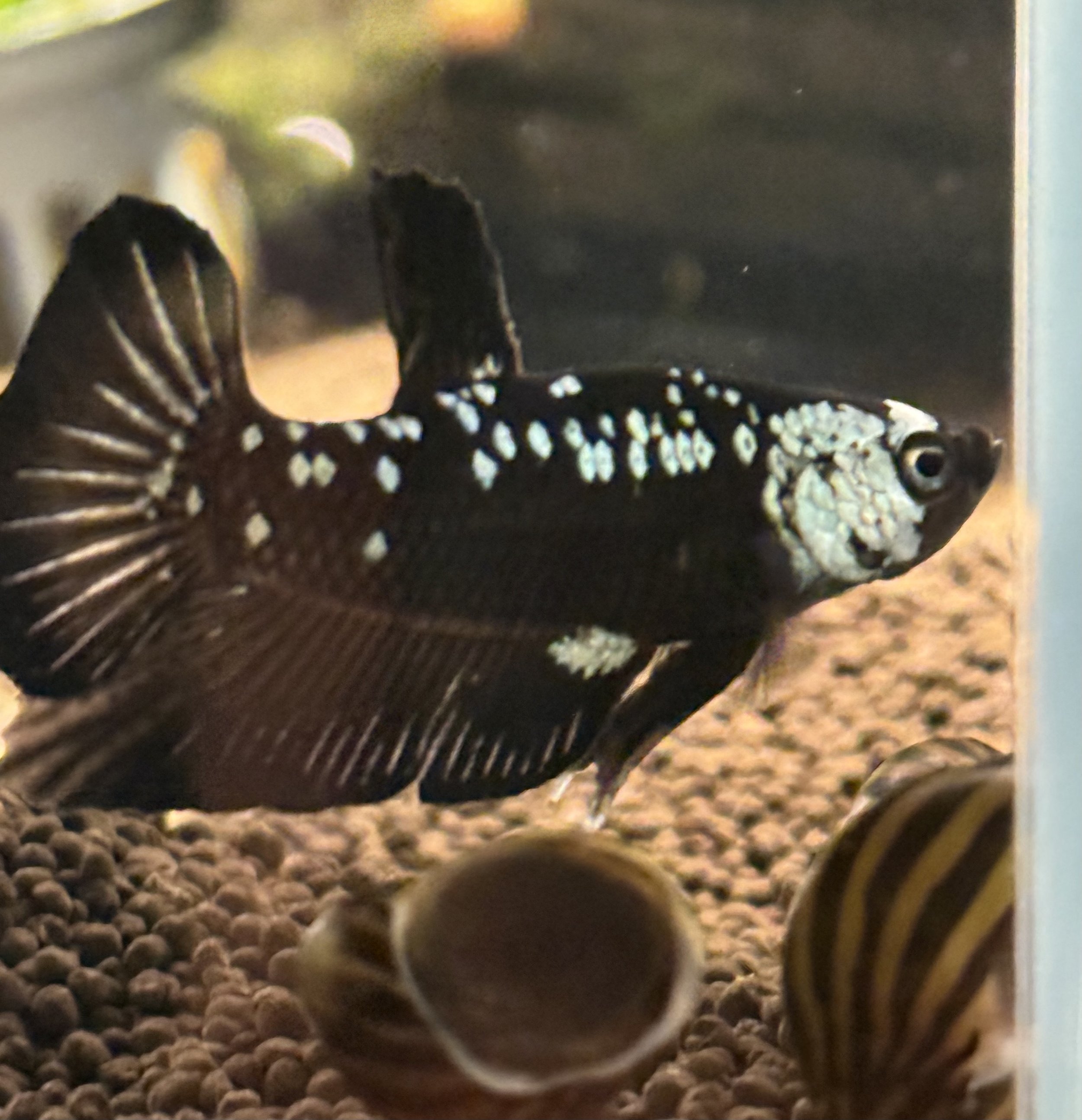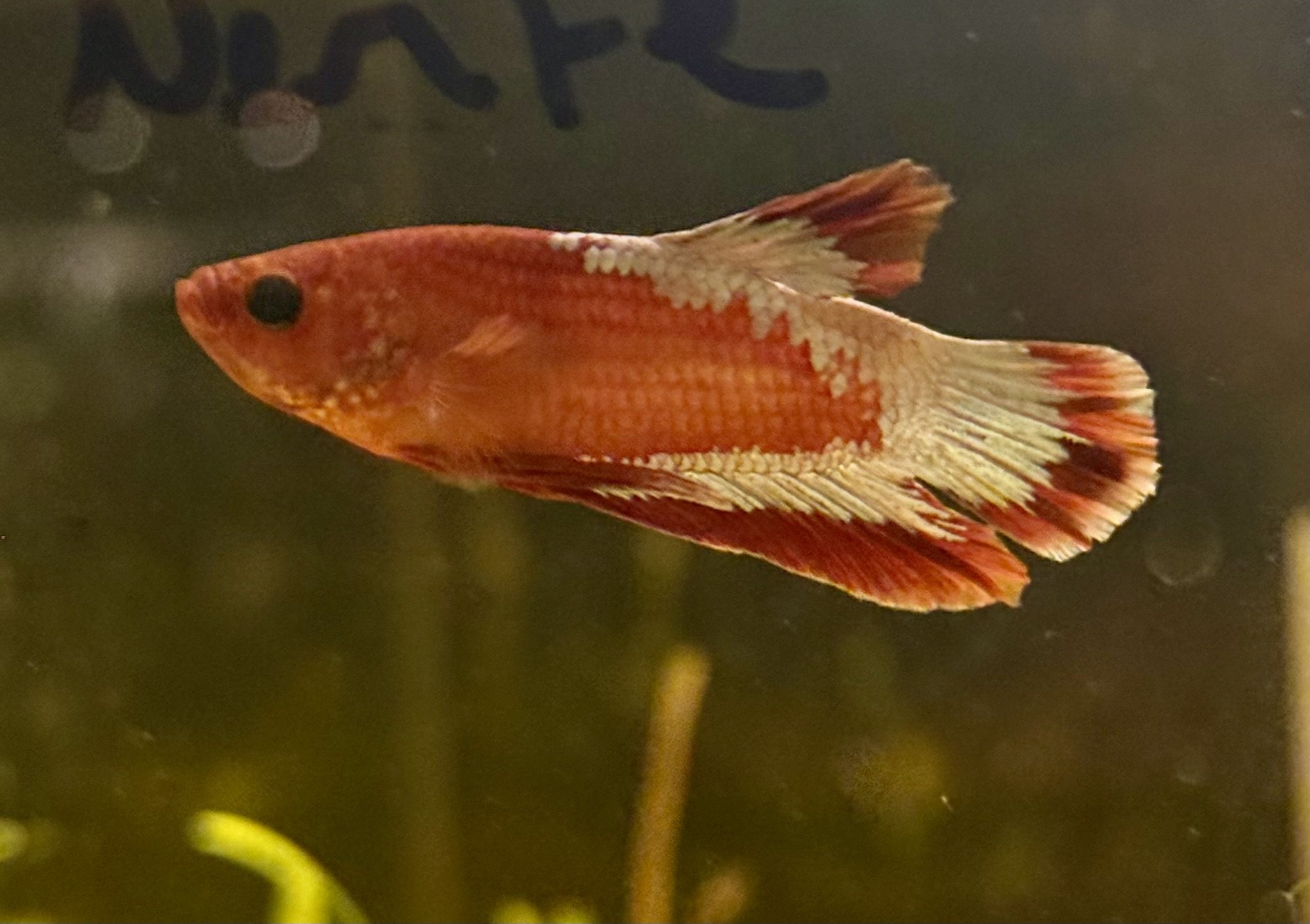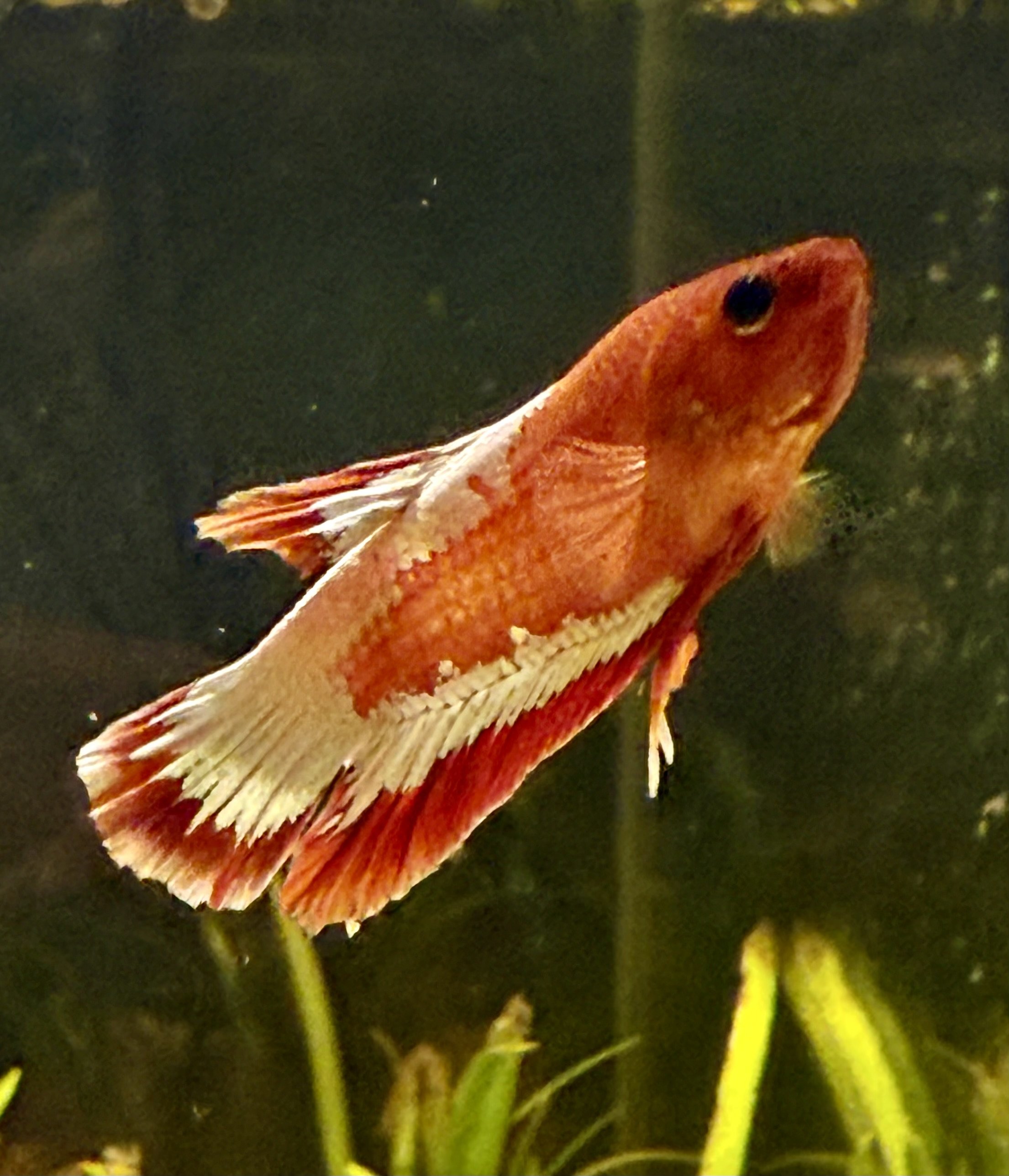WYSIWYG Betta Patoti- PAIR XL
NOTE- This item is ‘What you see is what you get’ and the fish pictured is the exact one you will receive
Betta patoti is a striking and relatively uncommon wild Betta species native to the slow-moving blackwater rivers and peat swamps of central and western Kalimantan, on the island of Borneo, Indonesia. Aquarists appreciate this species for its impressive coloration, larger adult size compared to most wild bettas, and intriguing breeding behavior, making it an attractive choice for specialized or species-focused aquariums.
Physically, Betta patoti is robust and elongated, typically reaching adult lengths of approximately 4 to 5 inches (10 to 13 centimeters), making it one of the larger wild Betta species. Males exhibit rich, intense coloration, often displaying a combination of deep reds, blues, greens, and iridescent turquoise highlights across their bodies and fins. Females are generally less colorful, showcasing subtler, earthier tones of olive-green or brown with lighter markings.
In the aquarium, Betta patoti is best kept as pairs or solitary individuals in adequately sized setups of at least 20 to 30 gallons to accommodate their territorial behavior and adult size. The tank should be carefully designed to replicate their natural environment, featuring low lighting, tannin-stained blackwater conditions, driftwood, leaf litter, and dense planting. Providing multiple hiding spaces helps these fish feel secure and reduces aggression or territorial conflicts.
Ideal water parameters for Betta patoti include temperatures ranging from 75 to 82°F (24 to 28°C), an acidic pH of 4.0 to 6.0, and soft, low-mineral-content water. Consistently pristine water quality and regular small water changes are crucial, as this species is highly sensitive to poor water conditions and sudden fluctuations.
Feeding Betta patoti requires high-quality live or frozen foods, as they can initially be reluctant to accept dried foods. A varied diet of bloodworms, brine shrimp, mosquito larvae, daphnia, small insects, and occasional small fish or shrimp is recommended to maintain optimal health and vibrant coloration.
Betta patoti can exhibit territorial aggression, especially among males. It is best maintained either alone, in pairs, or with carefully selected tankmates such as small peaceful loaches, bottom-dwelling catfish, or calm schooling species large enough to avoid becoming prey. Aggressive or overly active species should be avoided to reduce stress and conflict.
Breeding Betta patoti is rewarding but challenging, as they are paternal mouthbrooders. After spawning, the male immediately takes the fertilized eggs into his mouth, incubating them for around two to three weeks before releasing fully developed fry capable of feeding on newly hatched brine shrimp and microworms. A quiet, undisturbed environment and careful maintenance of optimal water parameters significantly improve breeding success.
Overall, Betta patoti is a beautiful, fascinating, and rewarding species, ideal for experienced aquarists or wild Betta enthusiasts. Its captivating appearance, larger size, intriguing breeding behavior, and specific care requirements make it a prized addition to carefully managed, specialized aquariums.
NOTE- This item is ‘What you see is what you get’ and the fish pictured is the exact one you will receive
Betta patoti is a striking and relatively uncommon wild Betta species native to the slow-moving blackwater rivers and peat swamps of central and western Kalimantan, on the island of Borneo, Indonesia. Aquarists appreciate this species for its impressive coloration, larger adult size compared to most wild bettas, and intriguing breeding behavior, making it an attractive choice for specialized or species-focused aquariums.
Physically, Betta patoti is robust and elongated, typically reaching adult lengths of approximately 4 to 5 inches (10 to 13 centimeters), making it one of the larger wild Betta species. Males exhibit rich, intense coloration, often displaying a combination of deep reds, blues, greens, and iridescent turquoise highlights across their bodies and fins. Females are generally less colorful, showcasing subtler, earthier tones of olive-green or brown with lighter markings.
In the aquarium, Betta patoti is best kept as pairs or solitary individuals in adequately sized setups of at least 20 to 30 gallons to accommodate their territorial behavior and adult size. The tank should be carefully designed to replicate their natural environment, featuring low lighting, tannin-stained blackwater conditions, driftwood, leaf litter, and dense planting. Providing multiple hiding spaces helps these fish feel secure and reduces aggression or territorial conflicts.
Ideal water parameters for Betta patoti include temperatures ranging from 75 to 82°F (24 to 28°C), an acidic pH of 4.0 to 6.0, and soft, low-mineral-content water. Consistently pristine water quality and regular small water changes are crucial, as this species is highly sensitive to poor water conditions and sudden fluctuations.
Feeding Betta patoti requires high-quality live or frozen foods, as they can initially be reluctant to accept dried foods. A varied diet of bloodworms, brine shrimp, mosquito larvae, daphnia, small insects, and occasional small fish or shrimp is recommended to maintain optimal health and vibrant coloration.
Betta patoti can exhibit territorial aggression, especially among males. It is best maintained either alone, in pairs, or with carefully selected tankmates such as small peaceful loaches, bottom-dwelling catfish, or calm schooling species large enough to avoid becoming prey. Aggressive or overly active species should be avoided to reduce stress and conflict.
Breeding Betta patoti is rewarding but challenging, as they are paternal mouthbrooders. After spawning, the male immediately takes the fertilized eggs into his mouth, incubating them for around two to three weeks before releasing fully developed fry capable of feeding on newly hatched brine shrimp and microworms. A quiet, undisturbed environment and careful maintenance of optimal water parameters significantly improve breeding success.
Overall, Betta patoti is a beautiful, fascinating, and rewarding species, ideal for experienced aquarists or wild Betta enthusiasts. Its captivating appearance, larger size, intriguing breeding behavior, and specific care requirements make it a prized addition to carefully managed, specialized aquariums.
NOTE- This item is ‘What you see is what you get’ and the fish pictured is the exact one you will receive
Betta patoti is a striking and relatively uncommon wild Betta species native to the slow-moving blackwater rivers and peat swamps of central and western Kalimantan, on the island of Borneo, Indonesia. Aquarists appreciate this species for its impressive coloration, larger adult size compared to most wild bettas, and intriguing breeding behavior, making it an attractive choice for specialized or species-focused aquariums.
Physically, Betta patoti is robust and elongated, typically reaching adult lengths of approximately 4 to 5 inches (10 to 13 centimeters), making it one of the larger wild Betta species. Males exhibit rich, intense coloration, often displaying a combination of deep reds, blues, greens, and iridescent turquoise highlights across their bodies and fins. Females are generally less colorful, showcasing subtler, earthier tones of olive-green or brown with lighter markings.
In the aquarium, Betta patoti is best kept as pairs or solitary individuals in adequately sized setups of at least 20 to 30 gallons to accommodate their territorial behavior and adult size. The tank should be carefully designed to replicate their natural environment, featuring low lighting, tannin-stained blackwater conditions, driftwood, leaf litter, and dense planting. Providing multiple hiding spaces helps these fish feel secure and reduces aggression or territorial conflicts.
Ideal water parameters for Betta patoti include temperatures ranging from 75 to 82°F (24 to 28°C), an acidic pH of 4.0 to 6.0, and soft, low-mineral-content water. Consistently pristine water quality and regular small water changes are crucial, as this species is highly sensitive to poor water conditions and sudden fluctuations.
Feeding Betta patoti requires high-quality live or frozen foods, as they can initially be reluctant to accept dried foods. A varied diet of bloodworms, brine shrimp, mosquito larvae, daphnia, small insects, and occasional small fish or shrimp is recommended to maintain optimal health and vibrant coloration.
Betta patoti can exhibit territorial aggression, especially among males. It is best maintained either alone, in pairs, or with carefully selected tankmates such as small peaceful loaches, bottom-dwelling catfish, or calm schooling species large enough to avoid becoming prey. Aggressive or overly active species should be avoided to reduce stress and conflict.
Breeding Betta patoti is rewarding but challenging, as they are paternal mouthbrooders. After spawning, the male immediately takes the fertilized eggs into his mouth, incubating them for around two to three weeks before releasing fully developed fry capable of feeding on newly hatched brine shrimp and microworms. A quiet, undisturbed environment and careful maintenance of optimal water parameters significantly improve breeding success.
Overall, Betta patoti is a beautiful, fascinating, and rewarding species, ideal for experienced aquarists or wild Betta enthusiasts. Its captivating appearance, larger size, intriguing breeding behavior, and specific care requirements make it a prized addition to carefully managed, specialized aquariums.








